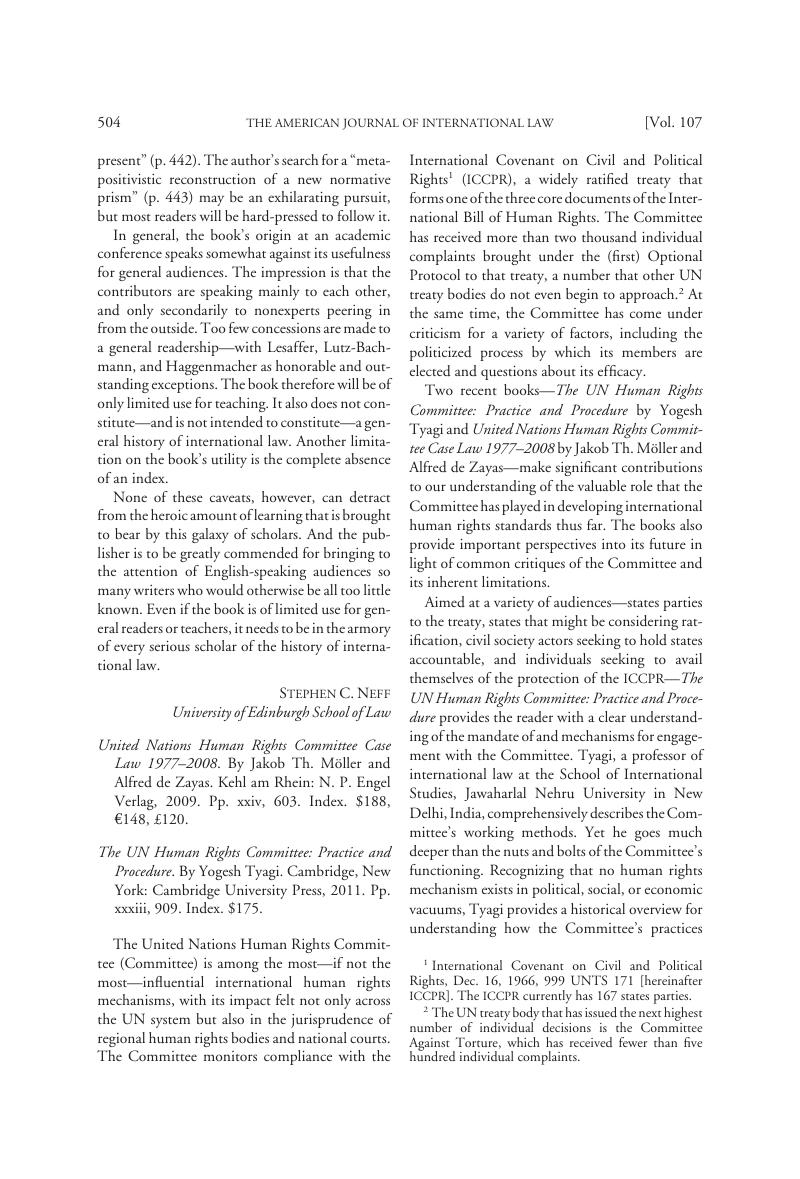No CrossRef data available.
Published online by Cambridge University Press: 20 January 2017

1 International Covenant on Civil and Political Rights, Dec. 16, 1966, 999 UNTS 171 [hereinafter ICCPR]. The ICCPR currently has 167 states parties.
2 The UN treaty body that has issued the next highest number of individual decisions is the Committee Against Torture, which has received fewer than five hundred individual complaints.
3 ICCPR, supra note 1, Art. 28.
4 Toonen v. Australia, Communication No. 488/1992, para. 5.1, UN Doc. CCPR/C/50/D/488/1992 (1994) (noting that “the author had made reasonable efforts to demonstrate that the threat of enforcement and the pervasive impact of the continued existence of these provisions on administrative practices and public opinion had affected him and continued to affect him personally...”).
5 See, e.g., Juan Mendez, Report of the Special Rap porteur on Torture and Other Cruel, Inhuman, and Degrading Treatment or Punishment, para. 15, UN Doc. A/HRC/22/53 (Feb. 1, 2013) (“[W]hile the prohibition of torture may have originally applied primarily in the context of interrogation, punishment or intimidation of a detainee, the international community has begun to recognize that torture may also occur in other contexts.”).
6 K.L.v.Peru, Communication No.1153/2003, UN Doc. CCPR/C/85/D/1153/2003 (2005).
7 Id., para, 6.3.
8 See, e.g., Navanethem Pillay, Strengthening the United Nations Human Rights Treaty Body System: A Report by the United Nations High Commissioner for Human Rights (June 2012), available at http://www2.ohchr.org/english/bodies/HRTD/docs/HCReportTBStrengthening.pdf.